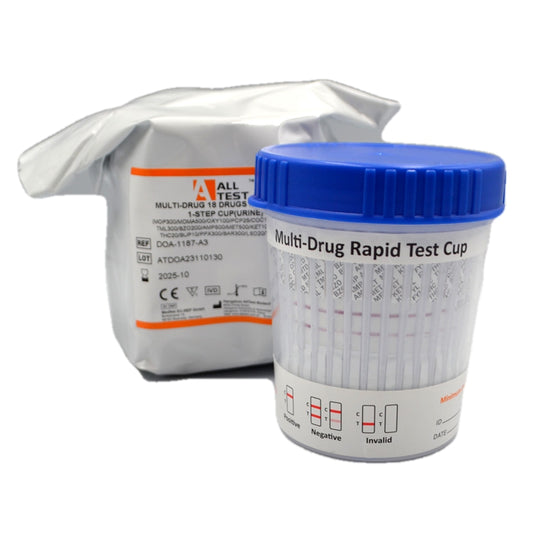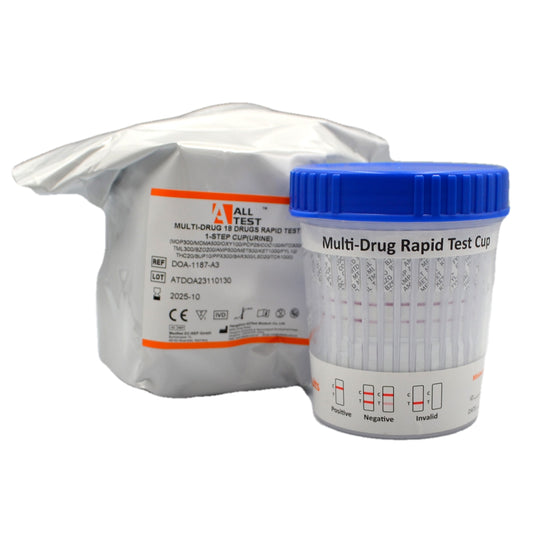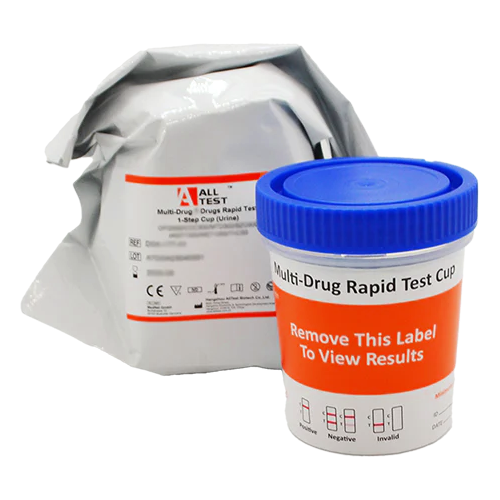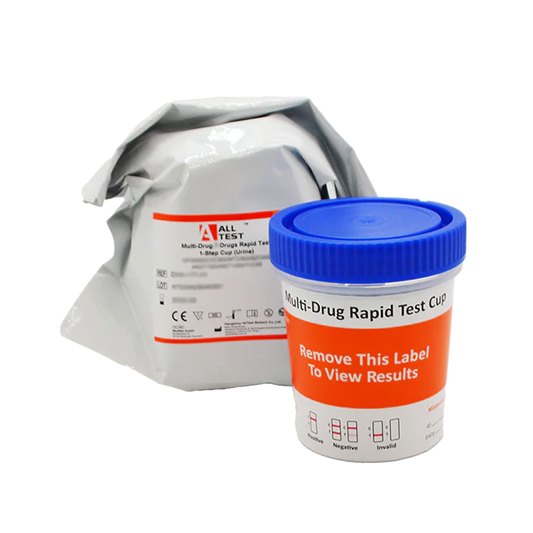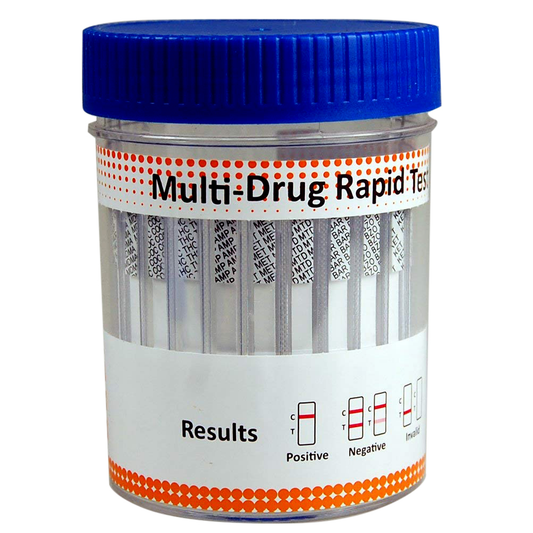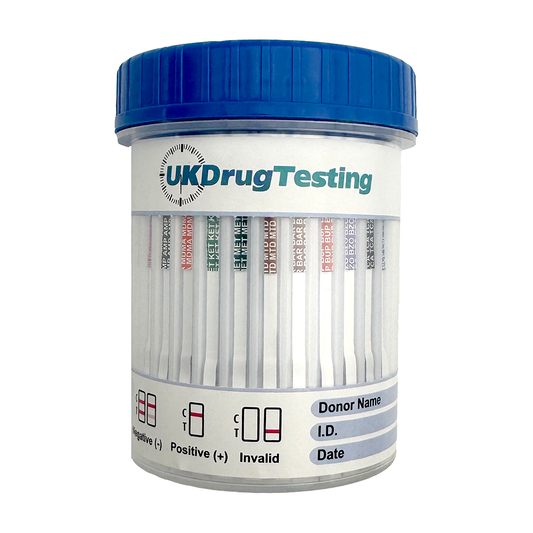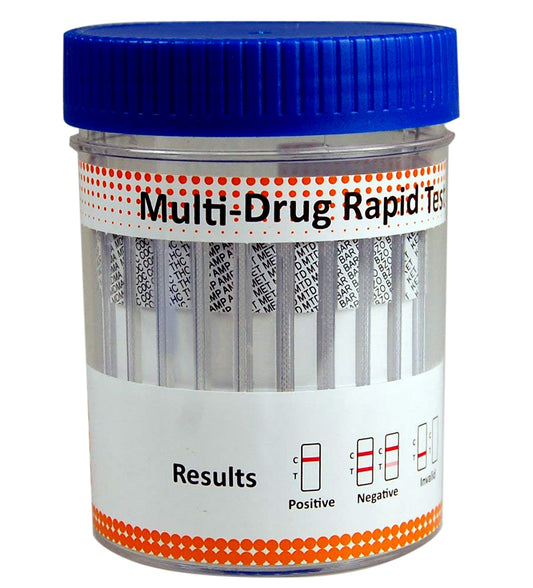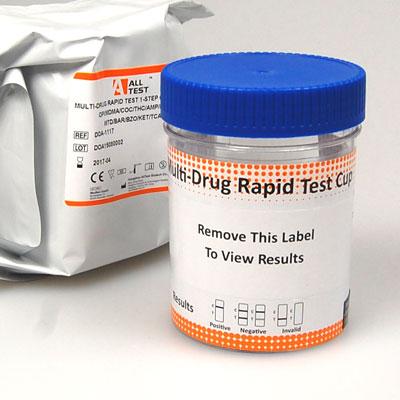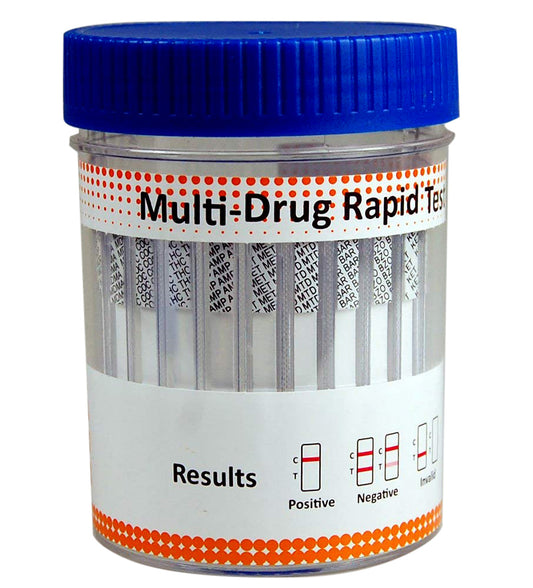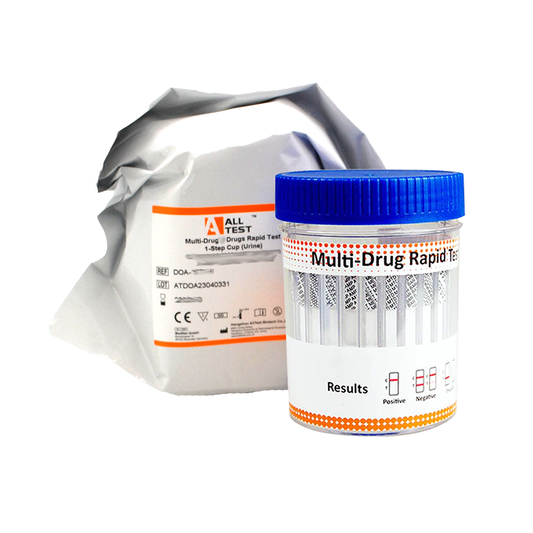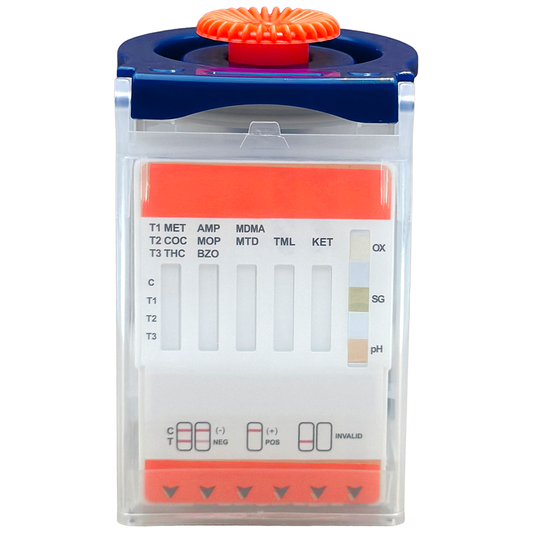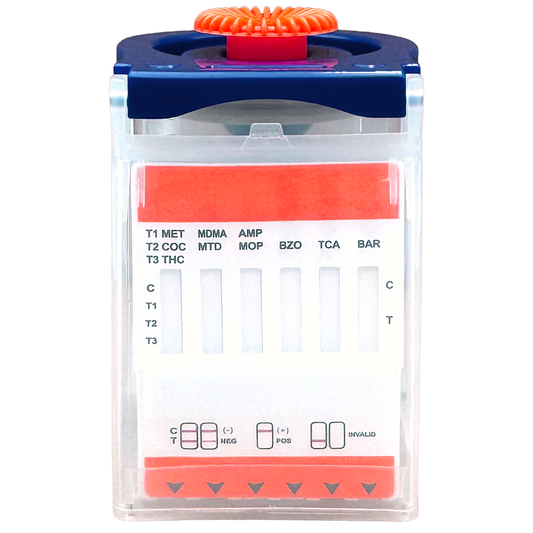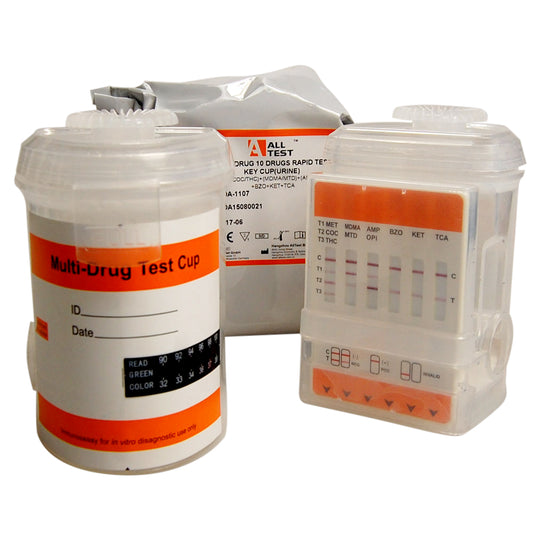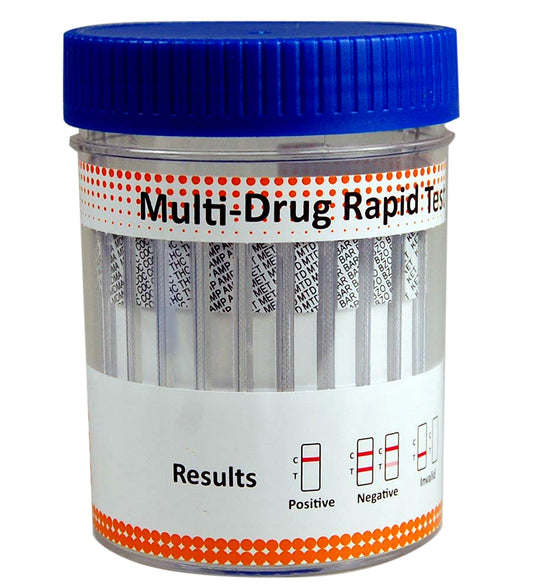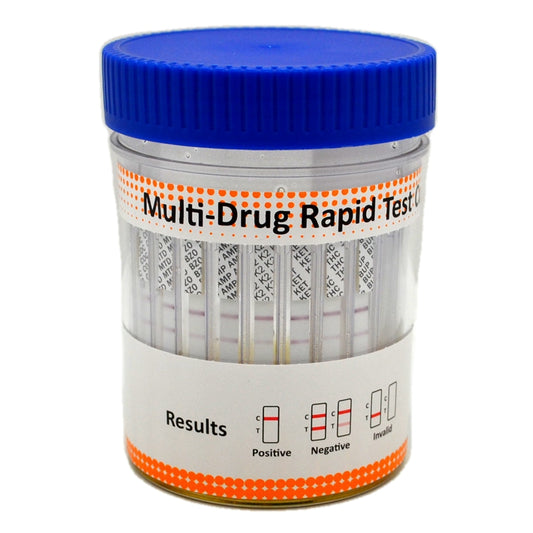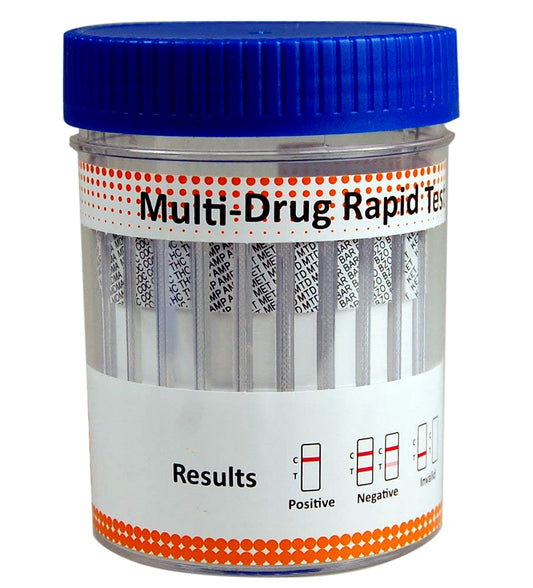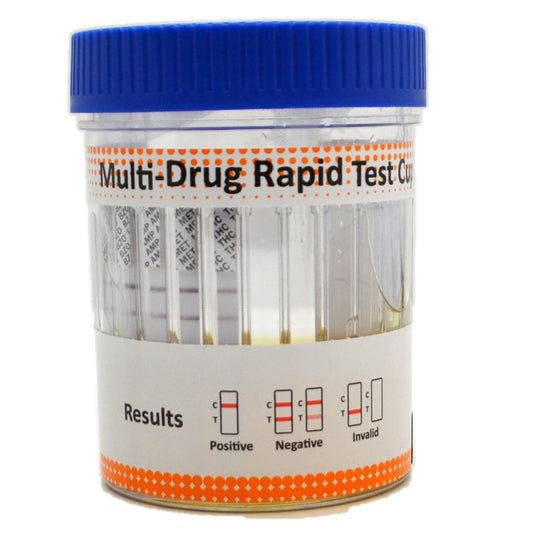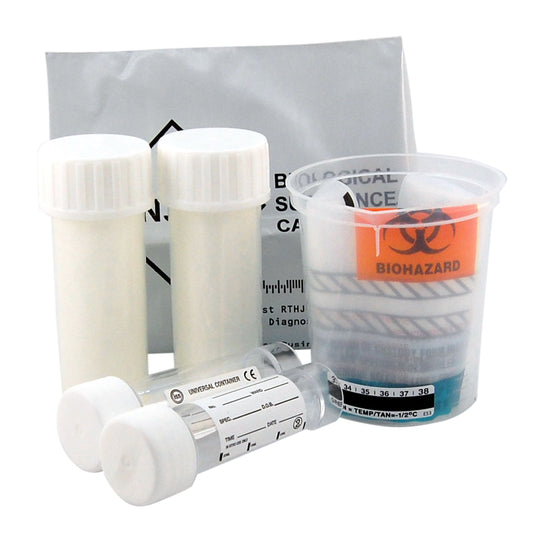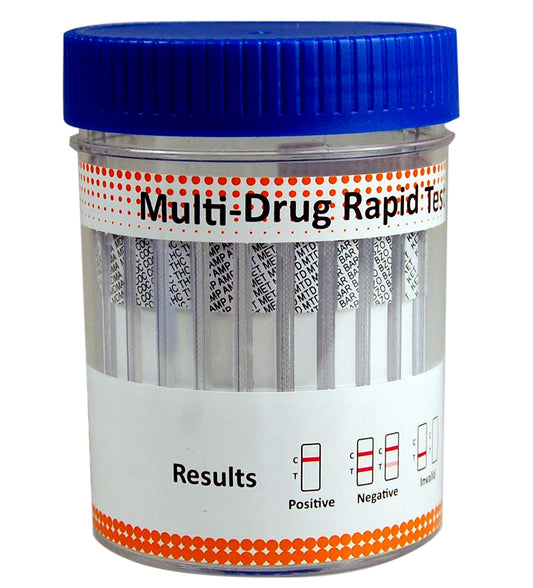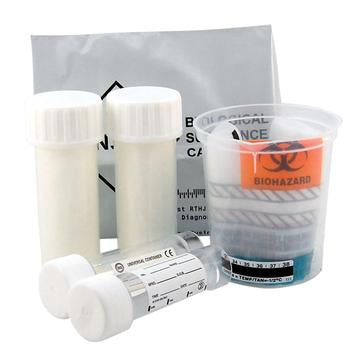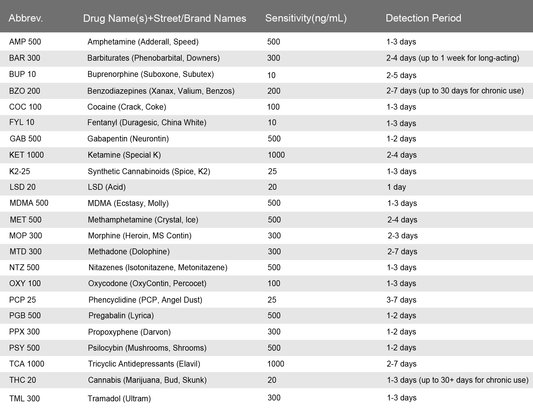Drug test cups-Integrated cup urine drug test kits from ALLTEST
These urine cup drug test kits are suitable for employers and workplace drug testing, healthcare, schools and home drug testing. We have fully integrated urine drug test cups for 18, 17, 13, 11, 10, and 7 drugs.
Need help selecting the best urine cup drug test for your needs?
If you do not find the drug test cups that you are looking for or are unsure which cup drug test kits would best suit your drug testing needs, please contact our customer service team during office hours 8.30-5.00pm Monday to Friday via our website chat, telephone 01263 731 168 or e-mail our UK Drug Testing Experts and they will be happy to help you.
Drug Test Cups
Urine cup drug test kits are commonly used tools for detecting the presence of various drugs or their metabolites in a person's urine sample. These kits are widely used in workplaces, schools, rehabilitation centers, and other settings where drug testing is necessary.
Here's how urine cup drug test kits typically work:
- Collection cup: The kit includes a collection cup into which the individual provides a urine sample. The cups usually have a secure lid to prevent tampering and spillage.
- Testing strips or panels: Inside the integrated drug test cup, there are usually testing strips or panels designed to detect specific drugs or classes of drugs. These inbuilt drug test panels can vary in the number of drugs they can detect, with some testing for a basic panel of common drugs like marijuana, cocaine, amphetamines, opiates, and methamphetamines, while others may test for a far wider range of substances.
- Activation and testing: Once the urine sample is collected into the drug test cup, the drug testing process begins immediately with the A design, single chamber cups. With the dual chamber B design, the user or administrator has to activate the test by inserting the key or switch. The bulk of the sample remains in the collection chamber giving the option to use it for confirmation testing.
- Results interpretation: After the designated waiting period, the results are interpreted by observing the appearance of lines on the testing strips or panels. Two lines indicates a negative result for the corresponding drug, while the absence of a T line (test line) indicates a positive result ie a drug has been detected. When to read the results may vary based on the specific design of the drug test cup, and it's essential to follow the instructions provided with the kit very carefully and to use a timer.
- Confirmation testing (if necessary): In cases where a positive result is obtained, confirming the result through more advanced testing methods like laboratory gas or liquid chromatography-mass spectrometry (GC-MS, LC-MS) may be necessary for legal or medical purposes.
Benefits of urine cup drug test kits include:
- Ease of use: They are relatively easy to use and do not require specialised training for administration.
- Rapid results: Results are often available within a short timeframe, typically within a few minutes.
- Non-invasive: Collecting a urine sample is a non-invasive procedure compared to other methods like blood tests.
- Cost-effective: They are generally much more cost-effective than laboratory-based drug testing methods.
Which design of drug test cup is best?
We stock two designs of workplace drug test cups, decide between A design = single chamber screw lid format drug test cup, and B design = twin chamber with key release to start the urine drug test and retention of the original sample in the collection chamber.
The B design dual chamber drug test cups are designed for specifically for healthcare and workplace drug testing as the cup splits the urine sample into two parts, so that one can be retained for laboratory drug testing if required.
The A design single chamber drug test cup is a simpler design and easier to use. It is still suitable for workplace and healthcare drug screening.
How many drugs can be screened for on a drug test cup?
The number of drugs that can be screened for on a drug test cup depends on the specific design and configuration of the cup. However, many drug test cups are designed to screen for multiple drugs simultaneously.
Common drug test cups typically screen for the following categories of drugs:
- Cannabinoids (THC): This includes marijuana, hashish, and THC-containing products.
- Cocaine COC: This includes cocaine and crack cocaine.
- Opiates MOP or OPI: This includes heroin, morphine, and codeine.
- Amphetamines AMP
- Methamphetamine MET: methamphetamine and crystal meth
- Ecstasy MDMA
- Benzodiazepines: This includes drugs like diazepam, lorazepam, and alprazolam.
- Methadone: A drug used for opioid addiction treatment.
- Ketamine KET: Ketamine is a dissociative anesthetic that is used for medical and veterinary purposes, but is also abused recreationally.
- Barbiturates: This includes drugs like phenobarbital and secobarbital.
- Tricyclic Antidepressants: This includes drugs like amitriptyline and nortriptyline.
- Oxycodone: A semi-synthetic opioid pain reliever.
- Buprenorphine: A partial opioid agonist used in opioid addiction treatment.
Some drug test cups may also include additional panels for screening other substances, such as synthetic cannabinoids (e.g., Spice, K2) or designer drugs.
It's essential to check the specifications of the particular drug test cup being used to determine which drugs it can screen for. Different manufacturers may offer cups with varying configurations and capabilities.

